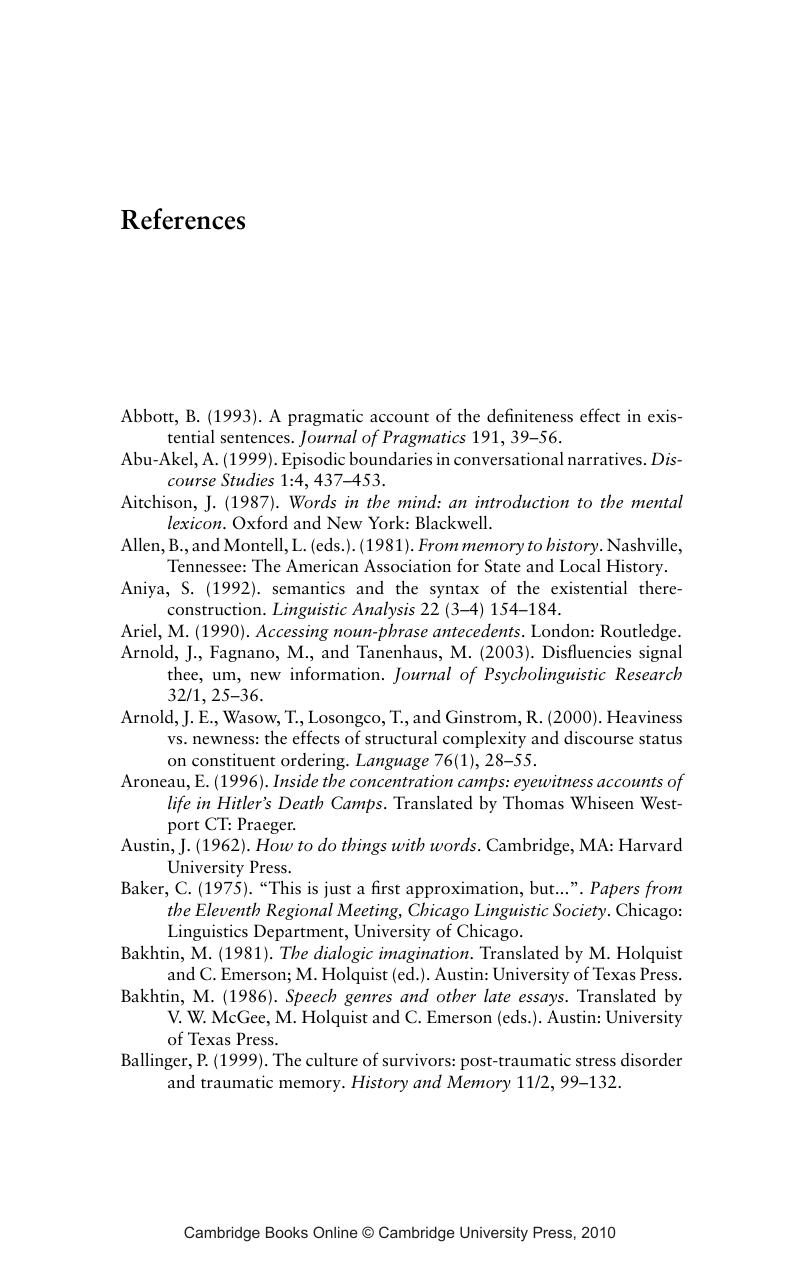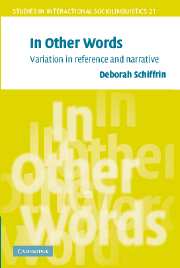Book contents
- Frontmatter
- Contents
- List of figures
- List of tables
- Preface
- 1 Variation
- 2 Problematic referrals
- 3 Anticipating referrals
- 4 Reactive and proactive prototypes
- 5 Referring sequences
- 6 Reframing experience
- 7 Retelling a story
- 8 Who did what (again)?
- 9 Redoing and replaying
- Appendix 1 Transcription conventions for data excerpts
- Appendix 2 Four versions of Susan Beer's capture story
- Appendix 3 Jack Cohen's narrative about Joey Bishop's childhood prank
- References
- Index
- References
References
Published online by Cambridge University Press: 14 January 2010
- Frontmatter
- Contents
- List of figures
- List of tables
- Preface
- 1 Variation
- 2 Problematic referrals
- 3 Anticipating referrals
- 4 Reactive and proactive prototypes
- 5 Referring sequences
- 6 Reframing experience
- 7 Retelling a story
- 8 Who did what (again)?
- 9 Redoing and replaying
- Appendix 1 Transcription conventions for data excerpts
- Appendix 2 Four versions of Susan Beer's capture story
- Appendix 3 Jack Cohen's narrative about Joey Bishop's childhood prank
- References
- Index
- References
Summary

- Type
- Chapter
- Information
- In Other WordsVariation in Reference and Narrative, pp. 353 - 371Publisher: Cambridge University PressPrint publication year: 2006



